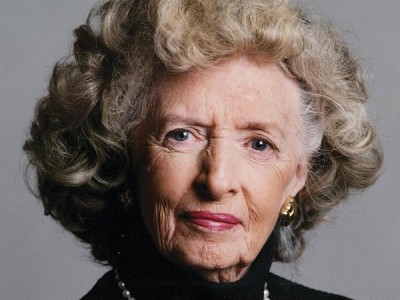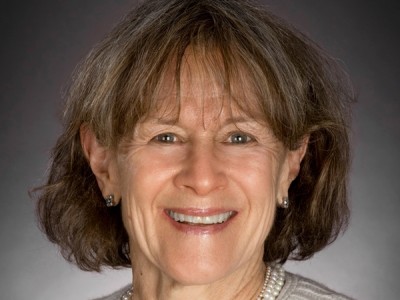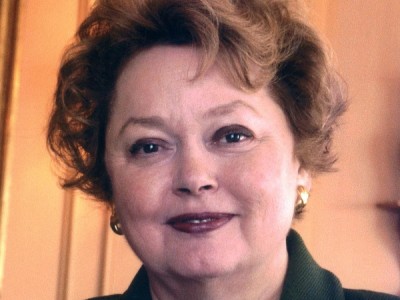
Mary Duke Biddle Trent Semans
Mary Duke Biddle Trent Semans

Mary Duke Trent Jones
Mary Duke Trent Jones

Elizabeth (Betsy) Locke
When The Duke Endowment was formed in 1924, leadership of most charitable foundations was firmly the purview of men. However, our founder, James B. Duke, understood the importance of women as partners in success. When his own mother died during his childhood, his grandmother and aunts came together to provide ongoing support. His sister, Mary Elizabeth Duke, was involved in the family business, sewing tobacco bags to package the family product in the early years and becoming a shrewd partner as the enterprise grew.
Although the Endowment is not a family foundation, women family members were named as board members in the early days. Mr. Duke’s second wife, Nanaline Holt Inman Duke, was one of the original Trustees and served until 1957. The Dukes’ only daughter, Doris, became a Trustee when she turned 18 in 1932 and remained in that role until her death in 1993.
One of the Endowment’s most influential leaders was Duke’s grand-niece, Mary Duke Biddle Trent Semans, who replaced Nanaline Duke on the board in 1957. She remained on the board for 55 years, including serving as the Endowment’s first female chair from 1982 to 2001.
About joining a board that was almost entirely men, Semans once said, “It really did not intimidate me. I had known a good many of these people as I grew up. [They were] good about women and interested in what they thought.” Semans was a groundbreaking leader in her own right – becoming one of the first two women elected to Durham City Council, helping to establish the NC School of the Arts and the Nasher Museum of Art at Duke University, serving on numerous boards, and being inducted into the North Carolina Women’s Hall of Fame.
During her time on the board, Semans helped to usher in more women leaders – each with an impressive track record:
● Juanita M. Kreps, Ph.D. (Trustee 1979 – 2010), was a noted educator and author who served as Assistant Provost and Vice President of Duke University, was the first woman and first economist to hold the post of U.S. Secretary of Commerce and was a director of the New York Stock Exchange. She was also the Endowment’s first woman treasurer.
● In 1988, Semans recruited her daughter, Mary Duke Trent Jones, to join her on the board. Mary built on the work of other women leaders, chairing the Communications Committee. But she also pushed the board to consider diversity and inclusion more deeply, resulting in the appointment of the Endowment’s first Black board member, John H. Franklin, Ph.D., in 1993.
● Wilhelmina M. Reuben-Cooke, who served as a trustee from 2007 – 2019, was one of the first five African Americans to attend Duke and became an accomplished lawyer and educator.
● Jean G. Spaulding (current Vice Chair) is a nationally recognized child psychiatrist, the first African American woman to graduate from Duke University School of Medicine and to serve on the Endowment’s board.
● Immediate Past Chair Minor Shaw was named board chair in 2012. Like Semans, Shaw came from a family that was very active in community leadership. A savvy businesswoman, Shaw led the Endowment through the building of its headquarters, and its response to the COVID-19 pandemic.
● Other current board members include: former Queens University President Pamela Davies; The Honorable Allyson K. Duncan (retired) the first African American woman to serve on the U.S. Circuit Court of Appeals for the 4th Circuit and North Carolina Court of Appeals; Constance F. Gray, who has a distinguished career in the social sciences; and award-winning journalist Judy Woodruff.
Together, these women leaders have contributed more than 200 years of wisdom and service to The Duke Endowment.
Semans also oversaw the hiring of the Endowment’s first female executive, Elizabeth (Betsy) Locke, who joined the staff in 1982 as the first-ever Public Information Officer. Locke, who also served as Director of Higher Education, became Executive Director in 1996 and was the first leader given the title of President in 1997 until her retirement in 2004.
During these years, having both a board chair and a president who were female was almost unheard of in philanthropy – especially in the South. Together, these two women led the creation of greater transparency and improved communication between the Endowment and the community, launched the Endowment’s internship program, strengthened connections between Duke University and Furman University to their surrounding neighborhoods, and steered the Endowment board and staff toward more cross-program approaches to entrenched problems. They demonstrated the power of women’s leadership to the rest of the field, lighting the way for other foundations. As they led, they also became fast friends.
Women continue to lead as Duke Endowment Trustees and employees, representing about half of board members and staff leadership roles today. They bring both depth and credit to Mr. Duke’s legacy.